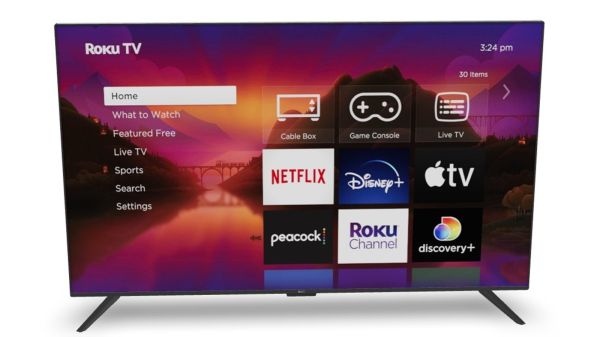Roku launched back in 2008 with its streaming player, which was one of the devices that first prompted audiences to ditch traditional cable in favor of internet-connected apps. In the years since, the streaming giant has amassed active users well into the millions and expanded outside of streaming devices with a variety of smart home products, audio equipment and its own televisions. However, there are a few things to know before buying Roku cameras for your home.
Advertisement
But many retail shoppers have noticed something strange: these large Roku TVs aren’t just competitively priced, some of them are a downright steal. It turns out there are a few explanations for the bargain-bin priced TVs, and it involves an increasing number of more economical brands, more efficient manufacturing methods, and lucrative information brokering. The end result is users get a smart TV from a reputable brand at an absolute steal of a cost.
A crowded budget TV market and production streamlining
Today’s marketplace offers buyers more options than ever in terms of cheap flat screens. This is due to relative newcomers like TCL, Hisense, Amazon, and now Roku, all bringing low-cost televisions to online and retail shelves. Competition drives manufacturers to find ways of undercutting or outdoing their rivals by lowering prices, providing extra features, and effectively utilizing events like Black Friday sales. For example, among the 43-inch up to 55-inch TV options available at Walmartthere are several 4K models under $250, all within $10 to $50 of each other with slightly different technology and capabilities. Not all cutting-edge features are universally appreciated, though, such as the so-called soap opera effect.
Advertisement
Several improvements have also been made to how efficiently flat-screen smart TVs are made today. Long gone is the era of wood paneling and thick cathode-ray tube form factors being incorporated into home entertainment. TVs are thinner than ever before, and the method by which manufacturers handle the glass displays has evolved. A large single piece of glass (mother glass) is used to produce multiple television displays by carefully cutting each one out with as minimal waste as possible. One piece of mother glass could produce up to three 65-inch and six 32-inch panes of glass for use on a total of nine televisions.
Selling information is big business
One of the main reasons for such low asking prices on new TVs is that companies like Roku can afford to lower prices because they are selling your data. The more engaged each audience member is on a particular streaming platform, the more personalized information is up for sale to hungry advertisers. In fact, according to InvestopediaRoku had a gross profit of $1.52 billion in 2023, and one of its primary earners was digital advertising.
Advertisement
Regarding what data is collected, it can encompass information like general location, which series, or movies you stream, and which commercials you view or engage with, to name a few. While it’s not entirely clear how much money Roku rakes in from selling information, it has altered the television sales business model. Instead of the focus being front-heavy, with the initial hardware purchase being the major earner, the industry has flipped. The TV itself can be sold just above cost, because now the goal has become creating a continual earning stream from every customer for years by monetizing their personal information.









